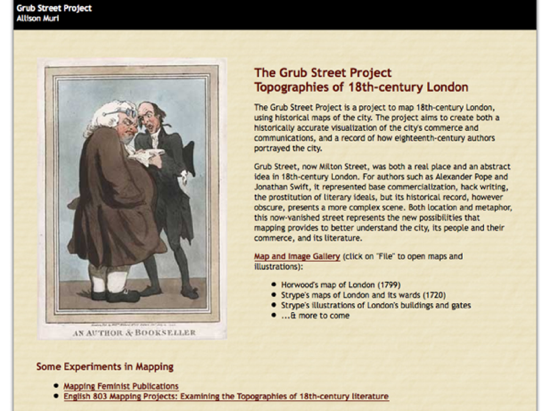
Image Credit: Screenshot from The Grub Street Project
While I wrote in my last blog here that I would use this week’s blog to discuss my upcoming conference paper for MMLA, I was led astray this weekend by an excellent panel I attended at CSECS that I thought the viz. audience might enjoy. (Sorry, Gossip Girl fans. Tune in next week!)
After deciding to attend the panel entitled “Mapping Culture: Topographies of London,” I was delighted to discover it featured not only a paper on Boswell’s enchanting London Journal, but also an excellent discussion about using mapping strategies to teach and research eighteenth-century texts. What united the various papers on the panel, which discussed such disparate texts as John Gay’s “Trivia,” the Mohock Club, Boswell’s aforementioned Journal, and Thomas De Quincey’s Confessions of an English Opium-Eater, was that each paper was based on material provided by The Grub Street Project, a website that unites topographical data with literary texts like Pope’s Dunciad.
Recent comments
2 years 29 weeks ago
2 years 44 weeks ago
2 years 44 weeks ago
2 years 50 weeks ago
3 years 4 weeks ago
3 years 4 weeks ago
3 years 4 weeks ago
3 years 6 weeks ago
3 years 6 weeks ago
3 years 6 weeks ago